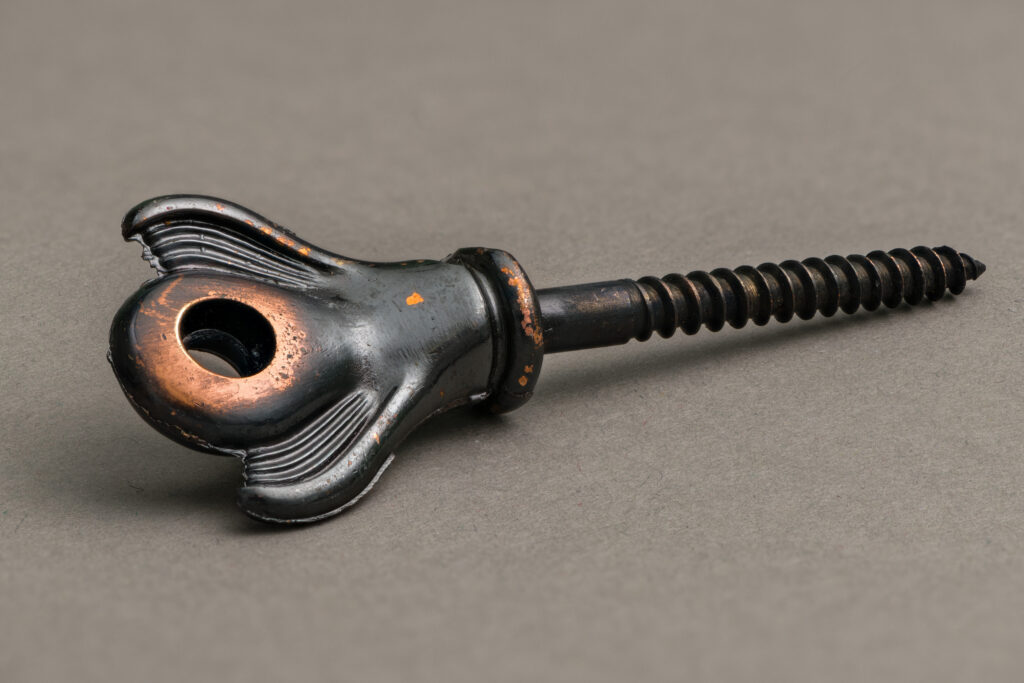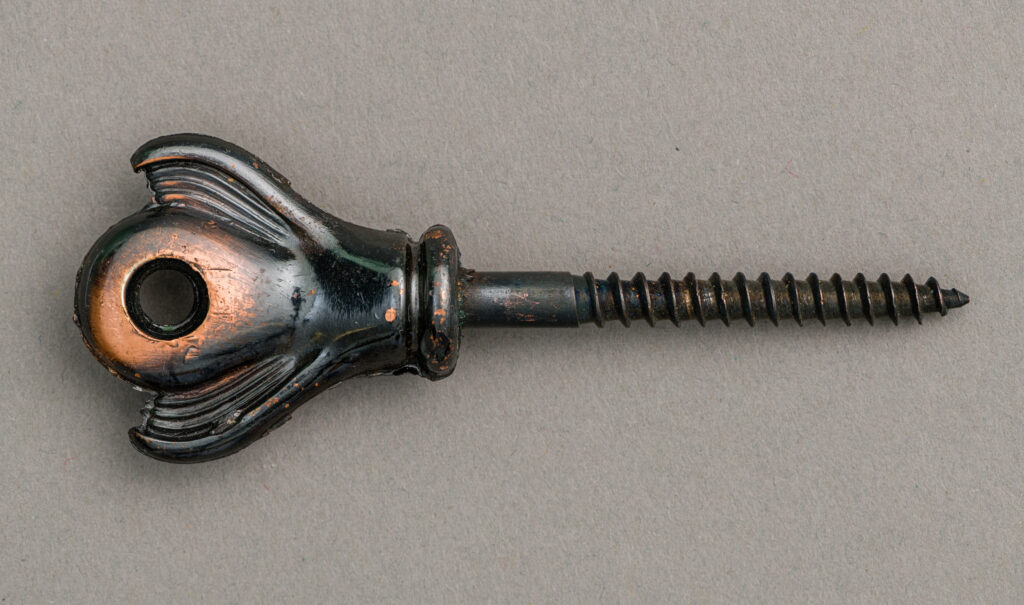

Newman Brothers were known for their variety of finishes, including their bronze lacquers. The ‘Antique Brass’ finish we see here was achieved using the following method:
Platinum was dissolved into nitro-hydrochloric acid, which was then allowed to crystalise. This was then dissolved in spirit of wine, ether, or water. A few drops of this solution are then mixed with any of the bronzing powders, such as crocus, sienna or rouge, which created a black-lacquer. The thumbscrew was then polished to remove parts of the black lacquer to reveal its brass base as we see here. This created the ‘Antique’ finish.
Thumbscrews were used to attach the coffin lid to the body of the coffin. Any screw on a coffin has to be able secure structural elements together, however thumbscrews were also designed for leverage during the tightening of the coffin, which was done by hand. Smaller versions of these thumbscrews were used to attach coffin plates to the coffin.
Similar in construction to ‘caplifters’, thumbscrews consist of a plated metal head soldered to a long iron screw. They differ from coffin screws, which are simpler in design. To see the full range of screws and thumbscrews Newman Brothers made in 1900, click here.







